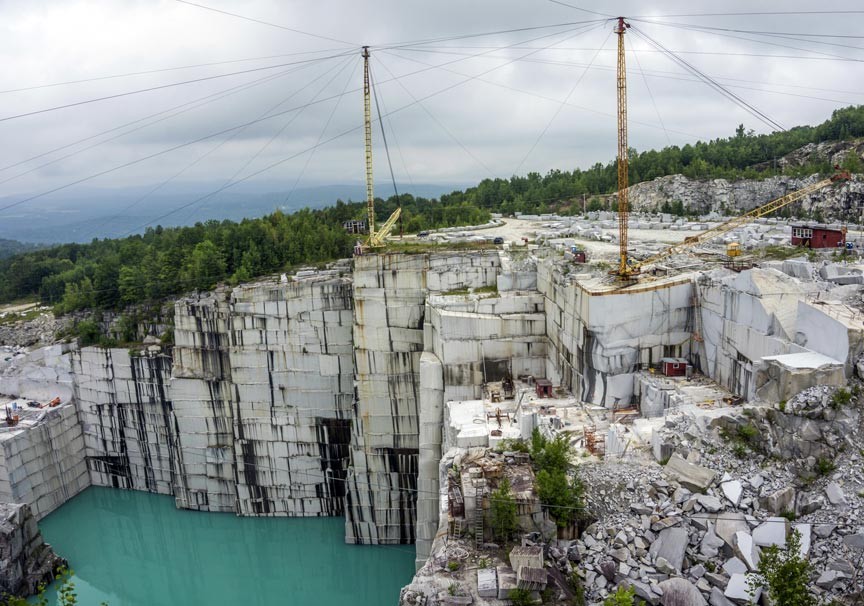Checking Out Granite Quarries in South Africa: A Comprehensive Overview
Checking Out Granite Quarries in South Africa: A Comprehensive Overview
Blog Article
Discovering the Rich History and Lasting Practices of Granite Quarrying
As we stand on the precipice of revealing the elaborate tapestry of granite quarrying, a journey through time reveals not just the physical act of drawing out rock however likewise the social and historical relevance woven into the very fabric of this practice. From the ancient origins that laid the foundation for modern quarrying strategies to the sustainable techniques that are forming the future of this market, each sculpt mark on granite surface areas tells a story waiting to be unearthed (granite quarries in south africa). The legacy of granite quarrying stretches much past simple extraction; it is a testament to human resourcefulness, durability, and the enduring attraction of this marvelous stone
Ancient Origins of Granite Quarrying
Dating back to old people, the method of quarrying granite has actually been an integral part of human background and building improvement. The earliest proof of granite quarrying go back to old Egypt, where substantial pyramids and elaborate sculptures were crafted from this resilient rock. The Egyptians used primitive tools to draw out granite blocks from quarries, showcasing the importance of this product in their significant constructions.
Progressing in history, the Greeks likewise made substantial contributions to the quarrying of granite. The Greeks used granite in different building wonders, such as holy places and statuaries, showing their skill in shaping and sculpting this sturdy rock. The Romans better improved the methods of quarrying granite, utilizing advanced tools like blades and hammers to remove and form granite for their famous frameworks.
With the centuries, the practice of quarrying granite has actually developed, with modern innovations enhancing efficiency while preserving the classic allure of this natural stone - granite quarries in south africa. From ancient civilizations to contemporary contractors, the heritage of granite quarrying continues to shape our globe
Development of Quarrying Techniques
The advancement of quarrying techniques has actually been marked by a continual progression in the direction of greater performance and precision in extracting granite. From the primary techniques used by our ancestors to the innovative modern technologies utilized in contemporary quarrying operations, the sector has actually undertaken significant improvements. Early quarrying techniques entailed manual work with fundamental devices such as chisels, hammers, and wedges to remove granite blocks from the earth. As civilizations proceeded, methods like fire-setting and primitive dynamites were presented to promote the extraction procedure.
Developments in computer-controlled equipment and 3D modeling have actually maximized quarrying operations, leading to very little environmental effect and enhanced sustainability practices. As the demand for granite proceeds to climb, the evolution of quarrying techniques remains integral to conference sector requires effectively and sustainably.
Social Importance of Granite
Granite holds an extensive cultural significance throughout numerous people due to its enduring presence in architectural masterpieces and admired monoliths. The cultural relevance of granite prolongs past its have a peek at this website physical qualities; it personifies durability, stability, and eternity, making it a symbol of withstanding traditions and practices.

Lasting Practices in Quarrying
Amidst the rich background of granite quarrying and its cultural significance exists an expanding emphasis on lasting techniques within the market. As environmental recognition and issues regarding source depletion have actually increased worldwide, the quarrying sector has progressively accepted sustainable approaches to minimize its effect on the environment and bordering neighborhoods.

Furthermore, reclamation and recovery of quarry sites post-extraction are important to lasting practices. By recovering quarried areas to an all-natural or valuable state, such as creating wild animals environments or entertainment areas, quarriers can offset the environmental impact of their procedures and contribute positively to the neighborhood environment.
Heritage of Granite Quarrying
With a historical backdrop steeped in craftsmanship and commercial progress, what withstanding effect has granite quarrying left on the landscape of modern-day society? The heritage of granite quarrying goes beyond mere removal methods; it has formed building marvels, city landscapes, and social heritage worldwide. The sturdy nature of granite has actually made it a favored choice for monoliths, structures, and infrastructure, standing as a testament to the ability and artistry of quarry employees across generations.
Moreover, the financial impact of granite quarrying can not be neglected. The market remains to offer work possibilities and drive neighborhood economic situations in regions where granite extraction is common. It has actually additionally spurred technical innovations in quarrying techniques and tools, leading to more effective and sustainable her response techniques.
In terms of sustainability, the legacy of granite quarrying consists of efforts to reduce environmental effects check my site via reclamation projects and liable resource administration. By balancing financial interests with environmental stewardship, the sector strives to ensure that future generations can remain to benefit from this enduring all-natural resource.
Final Thought

Report this page